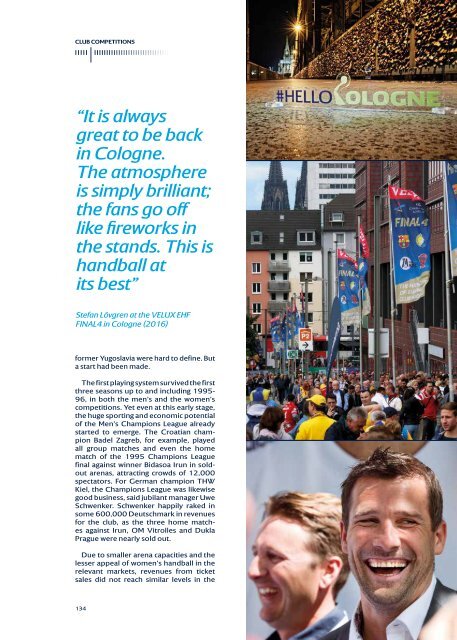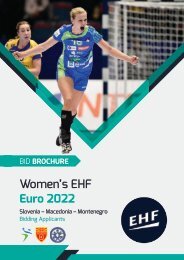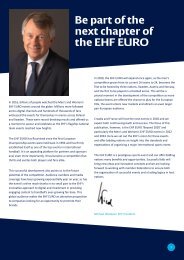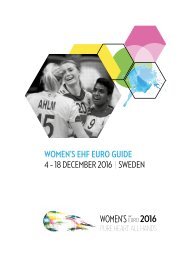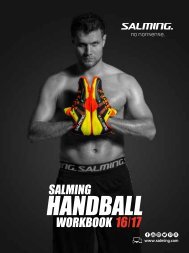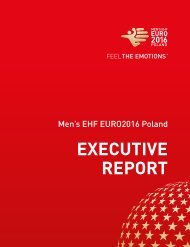ehf_25yers_book_webversion
Create successful ePaper yourself
Turn your PDF publications into a flip-book with our unique Google optimized e-Paper software.
CLUB COMPETITIONS<br />
“It is always<br />
great to be back<br />
in Cologne.<br />
The atmosphere<br />
is simply brilliant;<br />
the fans go off<br />
like fireworks in<br />
the stands. This is<br />
handball at<br />
its best”<br />
Stefan Lövgren at the VELUX EHF<br />
FINAL4 in Cologne (2016)<br />
former Yugoslavia were hard to define. But<br />
a start had been made.<br />
The first playing system survived the first<br />
three seasons up to and including 1995-<br />
96, in both the men’s and the women’s<br />
competitions. Yet even at this early stage,<br />
the huge sporting and economic potential<br />
of the Men’s Champions League already<br />
started to emerge. The Croatian champion<br />
Badel Zagreb, for example, played<br />
all group matches and even the home<br />
match of the 1995 Champions League<br />
final against winner Bidasoa Irun in soldout<br />
arenas, attracting crowds of 12,000<br />
spectators. For German champion THW<br />
Kiel, the Champions League was likewise<br />
good business, said jubilant manager Uwe<br />
Schwenker. Schwenker happily raked in<br />
some 600,000 Deutschmark in revenues<br />
for the club, as the three home matches<br />
against Irun, OM Vitrolles and Dukla<br />
Prague were nearly sold out.<br />
Due to smaller arena capacities and the<br />
lesser appeal of women’s handball in the<br />
relevant markets, revenues from ticket<br />
sales did not reach similar levels in the<br />
134


